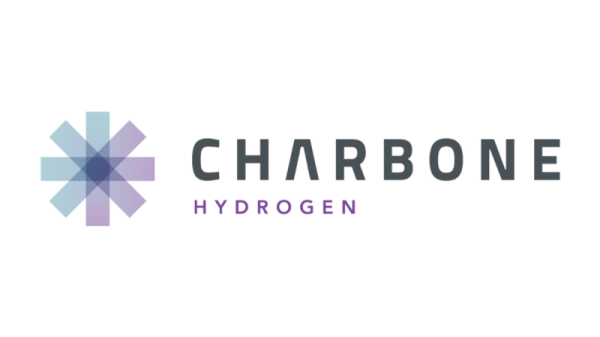After posting a surplus of 776,000 ounces in 2022, platinum began to reverse course in 2023 on the back of strong demand and decreased supply, ultimately losing 9.43 percent from the start of the year to close with a price of US$987.25.
At the start of the year, the World Platinum Investment Council (WPIC) expected the precious metal to slip into a 2023 deficit of around 556,000 ounces based on increasing demand from the auto manufacturing sector and strong imports from China.
Platinum has been widely used in the production of catalytic converters since they were mandated for all cars in 1975 in the United States and 1993 in the European Union and United Kingdom. These contain one or more of the platinum-group metals (PGMs) platinum, palladium and rhodium, which act as catalysts to break down harmful emissions, and separate nitrogen from oxygen in nitrogen oxide molecules.
The metal is also being increasingly used in the production of green hydrogen, which is hydrogen produced from renewable sources as opposed to fossil fuels. PGMs are used to create proton exchange membranes as a catalyst to separate hydrogen and oxygen from water molecules.
Hydrogen technologies already have more than US$570 billion in announced investments through 2030. If the sector realizes its potential, it represents significant demand growth for PGMs in the medium- to long-term.
Additionally, platinum has considerable demand for investment, in part due a precious metal and is used by investors as a haven similar to silver and gold.
How did platinum perform in 2023?
In its most recent quarterly report, released in November 2023, the WPIC revised its deficit expectation for 2023 to a shortfall of 1,071,000 ounces, nearly twice its initial one of 556,000. This was driven by both lower supply and heightened demand.
On the supply side, 4,046,000 ounces of platinum were produced globally from Q1 to Q3 of last year, down 2.63 percent year-on-year. The majority of platinum production comes from South Africa, where mines continued to face electricity problems at the start of the year, leading to significant production deficits year-over-year in Q1 and Q2. Data from the WPIC indicates that over the first three quarters of 2023, South African platinum output came to a total of 2,789,173 ounces, a decrease of 6.53 percent — or 194,844 ounces — compared to the equivalent period in 2022.
Production in the country improved slightly over the course of 2023, and Q3 2023 production was up by 19,000 ounces compared to Q3 2022, marking the first quarter to see a year-over-year production increase since Q4 2021. The WPIC notes that the increase was the result of better management of load curtailment and less downstream processing capacity downtime.
Platinum price from January 1, 2023, to December 31, 2023.
Chart via TradingEconomics.
Russia, Zimbabwe and North America also produce significant amounts of the metal, and all three saw production increases compared to 2022, partially offsetting South Africa’s losses. Russia’s platinum production increased 6.96 percent to 537,739 ounces due to deferred downstream maintenance, Zimbabwe’s output was up 3.82 percent to 370,467 ounces and North America’s output increased 3.76 percent to 204,740 ounces. The three regions combined for an additional 56,038 ounces.
Supply was also impacted by a 12.98 percent decrease in recycled platinum, which came to 1,094,000 ounces in the first nine months of 2023, down from 1,257,000 ounces in 2022.
This overall decrease in platinum supply has been set against a backdrop of increasing demand, which came in at 6,077,500 ounces in the first nine months of 2023 compared to 4,767,000 in 2022.
“Recycling supply has been held back by a shortage of end-of-life vehicles as consumers are running existing vehicles for longer,” he explained.
Demand in 2023 was also bolstered as investors began to return to the market, with 322,000 ounces being traded through the first half of the year as opposed to a net selloff of 327,000 ounces in the first half of 2022. The biggest change came from inflow of investment from ETFs, which saw 196,000 ounces being purchased in the first half of 2023, versus an outflow of 278,000 ounces in the first half of 2022.
Despite platinum seeing an increasing deficit as 2023 ended, its price finished the year at US$987.25 on December 29, significantly down from its yearly peak of US$1,124.28 on April 21, as above ground stockpiles came into play.
“The biggest issue facing the platinum market in the past year has been the development of a record supply/demand deficit, which has been met by a drawn-down from above ground stocks that has acted to suppress a response in the platinum price,” Sterck said.
What will happen to the platinum price in 2024?
“Mine supply is at risk of increasing decline,” Swarts said. “Given the inflationary costs of wages, power and the weakening rand, more than 50 percent of mines in South Africa are lossmaking at the spot basket price. We can expect to see production curtailment and mine closure if prices remain at current levels over the next 2-5 years.”
The curtailment of supply is a position echoed by Rohit Savant, vice president of research with CPM Group, although he doesn’t see it happening until after 2024.
“While mining companies are expected to be challenged by the weakness in prices cutting production especially in South Africa, this year is likely to be difficult, especially since it is an election year and so much of South African employment and GDP is dependent on the mining sector,” he said.
Savant also sees mining curtailments as a tricky action. “The further out any supply cuts are pushed, the larger they would need to be, which should help to provide some downside support to prices.”
For now, however, markets are still working through stockpiles in above-ground inventories, which is helping to keep prices suppressed despite strong demand.
“We forecast platinum to remain in sustained market deficits through 2027. The biggest driver is likely to be the point at which the depletion of above ground stocks reaches a critical level where higher prices are needed to attract additional material into the market,” Sterck acknowledged.
Investor takeaway
With the automotive industry reacting to tighter emissions regulations, catalytic converters are requiring higher load-outs of PGMs, and with increased substitution of palladium, demand for platinum is likely to remain high for the next several years. The metal is also under increasing demand specifically for its use in the production of green hydrogen, which is becoming an emerging sector that is expected to be an important part of the energy transition, particularly beyond 2035.
However, the price of platinum is being weighed down by a few factors, including a significant fall in the prices of rhodium and palladium. “The decline in the prices of palladium and rhodium has resulted in a 25% decrease of primary mine supply experiencing negative operating margins,” Sterck said.
Prices for all PGMs are likely to be the driving factor behind any supply decisions, and until prices begin to rebound, supply is likely to continue to be suppressed.
Securities Disclosure: I, Dean Belder, hold no direct investment interest in any company mentioned in this article.







































